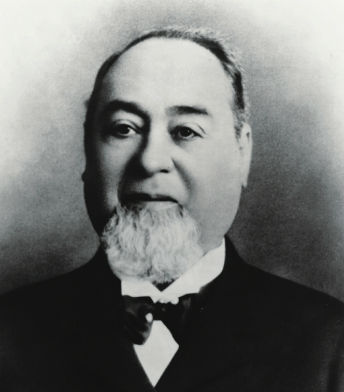Last updated: August 4, 2023
Lesson Plan
Commercial and Non-Industrial Occupations
Pre-Visit Activity 1:
Entrepreneurs

- Grade Level:
- Upper Elementary: Third Grade through Fifth Grade
- Subject:
- Social Studies
- Lesson Duration:
- 30 Minutes
- Common Core Standards:
- 4.SL.1, 4.W.1
- State Standards:
- 4 - H3.0.2
- Thinking Skills:
- Remembering: Recalling or recognizing information ideas, and principles. Understanding: Understand the main idea of material heard, viewed, or read. Interpret or summarize the ideas in own words.
Objective
Students will be able to define entrepreneur and briefly describe the accomplishments of at least one entrepreneur.
Background
Entrepreneurs take risks in opening up a business on their own in the hopes of becoming successful and earning money. Many modern conveniences are the products of entrepreneurs, including jeans made by Levi Strauss and electrical appliances made possible by Thomas Edison. Familiar 20th century entrepreneurs include Henry Ford, Estée Lauder, Bill Gates, and Oprah Winfrey.
Many inventors and entrepreneurs have a history of immigration. Levi Strauss was born in Germany and immigrated to the United States with his brother and two sisters when he was 18 years old to join family already residing in New York City. Although not an immigrant herself, Estée Lauder’s parents came from Hungary. She helped in the family’s hardware store and was able to learn entrepreneurial and business skills that she applied to create her own world famous cosmetics company.
Preparation
Prior to lesson, research and print off photos of 19th and 20th century entrepreneurs.
Materials Needed
- Photos and short descriptions of 19th and 20th century entrepreneurs
Lesson Hook/Preview
Ask students what entrepreneurship is.
Procedure
1. Ask students what entrepreneurship is. What does it take to be an entrepreneur? Students can turn and talk to one another. Then discuss as a whole class. Write the definition on the board.
2. Show students pictures of some 19th and 20th century entrepreneurs. Ask students if they know who any of them are. What did that person do?
3. Explain that some of these entrepreneurs were either immigrants or had family members who immigrated to the United States. How does this relate to copper mining communities? (Many Keweenaw residents were immigrants or had family immigrate as well.)
4. Ask if anyone would want to be an entrepreneur. Why or why not? Optional: Students can write an opinion paper. They should reference what an entrepreneur is.
Vocabulary
Entrepreneur- a person willing to take a risk to start a business as a way to earn money
Additional Resources
References:
Maggie Walz https://www.nps.gov/kewe/learn/historyculture/maggie-walz.htm
J.W. Nara http://www.lib.mtu.edu/mtuarchives/exhibits/Nara/photos/pamphlet.pdf
http://www.lib.mtu.edu/mtuarchives/exhibits/Nara/
http://www.lib.mtu.edu/mtuarchives/exhibits/Nara/family.html
Antonia Putrich and Marie Grierson
Hoagland, Alison K. Mine Towns: Buildings for Workers in Michigan’s Copper Country. Minneapolis: University of Minnesota Press, 2010
Additional Photograph lessons: http://www.kodak.com/global/en/consumer/education/lessonPlans/indices/elementary.shtml
http://www.lessonplanet.com/article/elementary-art/focus-on-the-art-of-photography-withphotography-lesson-plans
https://educators.brainpop.com/lesson-plan/digital-cameras-lesson-plan/
Little Book and Accordion Book:
Lindquist, Tarry. Seeing the Whole Through Social Studies, Second Edition. Portsmouth, NH: Heinemann, 2002
Related Lessons or Education Materials
This pre-activity is one of three that can be completed for fourth grade about commercial and non-industrial occupations in the Keweenaw before a field trip visit to the Calumet Visitor Center. There is also an assortment of related post-activities that can be completed as well.
